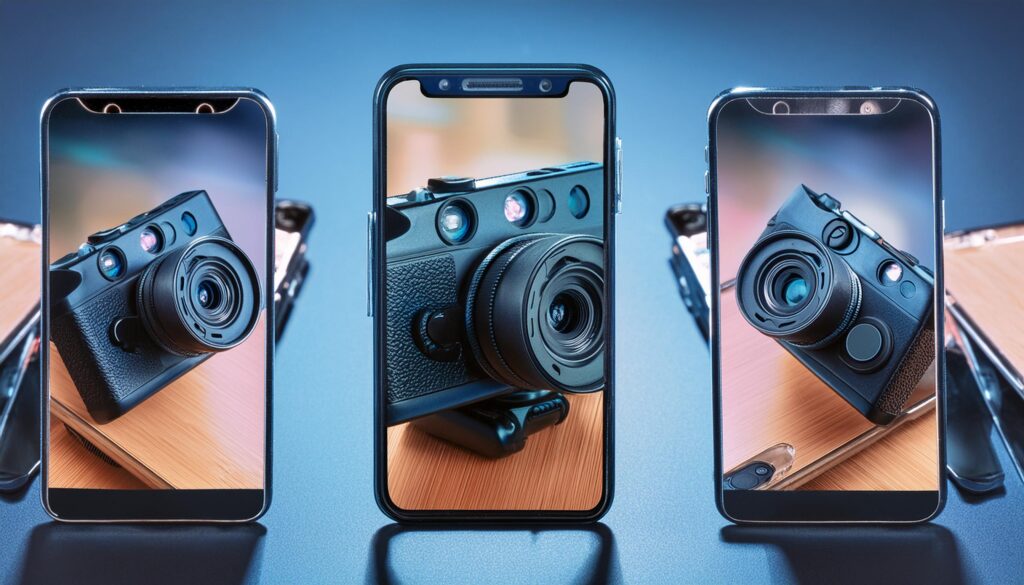
In the fast-evolving world of smartphone technology, camera capabilities have become a major selling point for consumers. Among the latest advancements, triple camera systems are gaining significant popularity. These setups enhance photographic versatility and quality, offering users a range of features and benefits that single or dual-camera systems can’t match. Here’s a comprehensive look at what makes triple camera systems so appealing and how they can elevate your mobile photography experience.
What is a Triple Camera System?
A triple camera system consists of three distinct lenses, each serving a unique purpose. These typically include:
- Primary Lens: The main camera, often equipped with a high-resolution sensor for capturing detailed images.
- Ultra-Wide Lens: This lens offers a wider field of view, allowing you to capture more of the scene in a single shot.
- Telephoto Lens: Used for optical zoom, this lens enables you to get closer to your subject without losing image quality.
Some smartphones may also include other specialized lenses like macro or depth sensors, but the primary, ultra-wide, and telephoto lenses form the core of most triple camera systems.
Benefits of Triple Camera Systems
1. Enhanced Versatility
The primary advantage of a triple camera system is the versatility it offers. Whether you’re capturing expansive landscapes, detailed close-ups, or zooming in on distant subjects, having multiple lenses at your disposal allows for a wider range of photographic opportunities.
2. Improved Image Quality
With multiple lenses working together, triple camera systems can produce higher quality images. The primary lens often features a large sensor and wide aperture, ensuring excellent performance in various lighting conditions. Combining data from different lenses can also enhance image detail and clarity.
3. Optical Zoom Capabilities
Unlike digital zoom, which can degrade image quality, optical zoom uses the telephoto lens to magnify subjects without losing detail. This is particularly useful for wildlife photography, sports events, or any scenario where you need to get closer to the action without physically moving.
4. Superior Low-Light Performance
Many triple camera systems come equipped with advanced night mode features that leverage the strengths of multiple lenses. By combining data from the primary and ultra-wide lenses, for example, the camera can capture more light and detail, resulting in better low-light photos.
5. Creative Shooting Modes
Triple camera setups often support various shooting modes that can spark creativity. Features like portrait mode, with its enhanced depth-of-field effects, and ultra-wide shots enable unique compositions that would be challenging to achieve with a single lens.
6. Enhanced Video Capabilities
Triple camera systems can significantly improve video recording by providing more stable and versatile shooting options. Features like 4K recording, optical image stabilization, and multiple frame rate options become more effective with the combined capabilities of three lenses.
Key Considerations
Software Integration
The quality of photos and videos captured with a triple camera system isn’t just about the hardware; software plays a crucial role. Advanced image processing algorithms help in merging data from different lenses, enhancing colors, reducing noise, and applying HDR effects for better results.
Battery Life
Running multiple cameras simultaneously can drain your phone’s battery faster. Manufacturers often optimize power consumption, but it’s something to keep in mind, especially if you’re planning extensive photo or video shoots.
Cost
Triple camera systems generally come with a higher price tag due to the advanced technology and components involved. However, the investment can be worthwhile for photography enthusiasts and those who prioritize camera performance in their smartphones.
Conclusion
Triple camera systems on smartphones represent a significant leap forward in mobile photography, offering enhanced versatility, superior image quality, and advanced features that cater to both amateur and professional photographers. By understanding the benefits and key considerations of these systems, you can make an informed decision and select a smartphone that best meets your photographic needs. As camera technology continues to evolve, triple camera setups are likely to become even more sophisticated, further revolutionizing the way we capture and share moments.